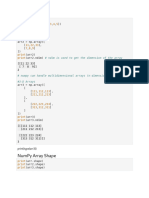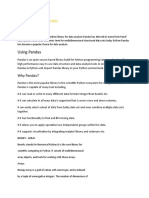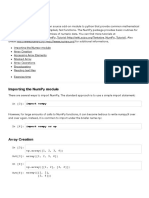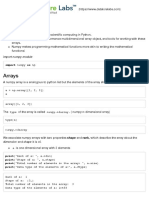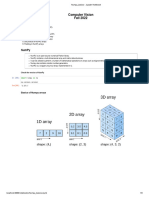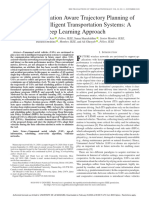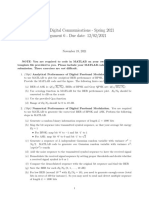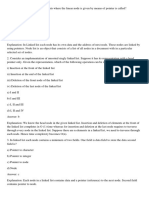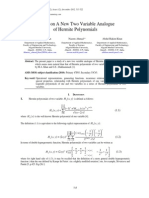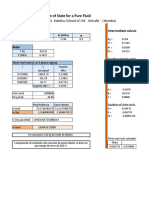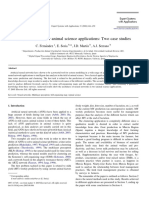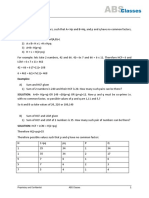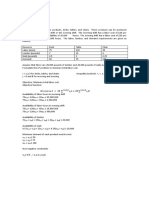0% found this document useful (0 votes)
17 views34 pagesCSE110 - Array Slide
The document provides an overview of topics to cover in two classes on linear and multi-dimensional arrays. Class 1 will cover linear arrays, including what they are, differences from other data structures, why they are needed, NumPy arrays, indexing, benefits of random access, and sorting algorithms. Class 2 will cover multi-dimensional arrays like matrices and higher dimensional arrays, examples like images, matrix operations, and indexing and iterating over 2D arrays.
Uploaded by
Ratul HasanCopyright
© © All Rights Reserved
We take content rights seriously. If you suspect this is your content, claim it here.
Available Formats
Download as PDF, TXT or read online on Scribd
0% found this document useful (0 votes)
17 views34 pagesCSE110 - Array Slide
The document provides an overview of topics to cover in two classes on linear and multi-dimensional arrays. Class 1 will cover linear arrays, including what they are, differences from other data structures, why they are needed, NumPy arrays, indexing, benefits of random access, and sorting algorithms. Class 2 will cover multi-dimensional arrays like matrices and higher dimensional arrays, examples like images, matrix operations, and indexing and iterating over 2D arrays.
Uploaded by
Ratul HasanCopyright
© © All Rights Reserved
We take content rights seriously. If you suspect this is your content, claim it here.
Available Formats
Download as PDF, TXT or read online on Scribd
/ 34












